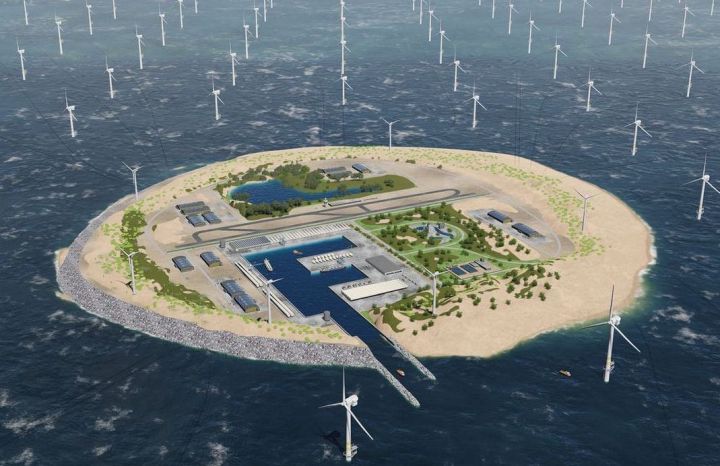
Dutch-controlled TenneT says the hub could be located in the North Sea and provide power to not only the Netherlands, but also the U.K., Norway, Denmark, Germany, and Belgium.
All of these countries are roughly the same distance from the proposed site, Dogger Bank, a vast sandbank about 160 miles north-west of the Netherlands and 60 miles off the east coast of England.
The power hub on the 2.3-square-mile artificial island would be surrounded by numerous wind turbines capable of providing power, via long-distance cables, to each of the countries.

As noted by the Guardian, TenneT claims its plan could lead to savings of billions of dollars over conventional wind farms and international power cables.
Offshore wind farms produce alternating current that suffers loss when sent over long distances, so the hub would convert it to more efficient direct current before sending it to nearby nations via more affordable cables. It would then be converted back to alternating current for delivery to homes and businesses.
TenneT is planning to produce a more detailed proposal this year, and said that if construction went ahead, the earliest it could be operational is 2027.
But the bold project faces plenty of hurdles, including securing both cooperation and funding from other energy companies in Europe.
If they can work together to make it happen, the wind farm could have a capacity of 30GW — more than double the total installed offshore wind power across all of Europe today.
With opposition from those living close to proposed wind farms a constant obstacle to their construction, it’s little surprise that energy firms are beginning to look at sites further offshore.
Rob van der Hage, manager of TenneT’s offshore wind grid development program, told the Guardian that “onshore wind is hampered by local opposition and nearshore is nearly full,” adding that it was therefore logical to look at the idea of placing wind farms farther away from land.


